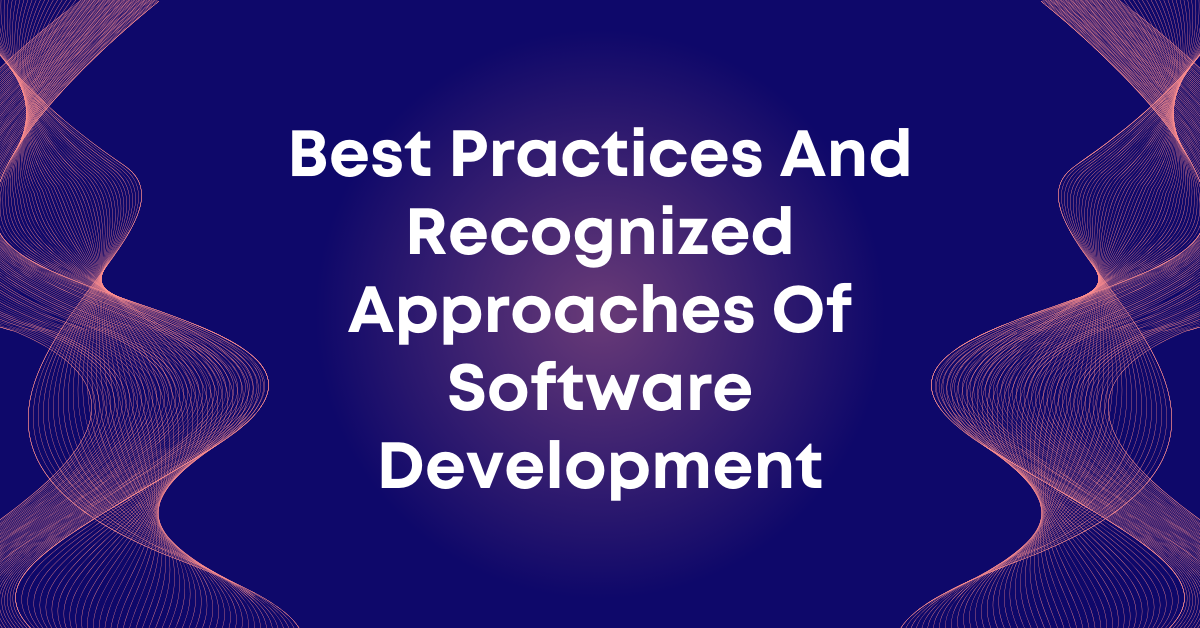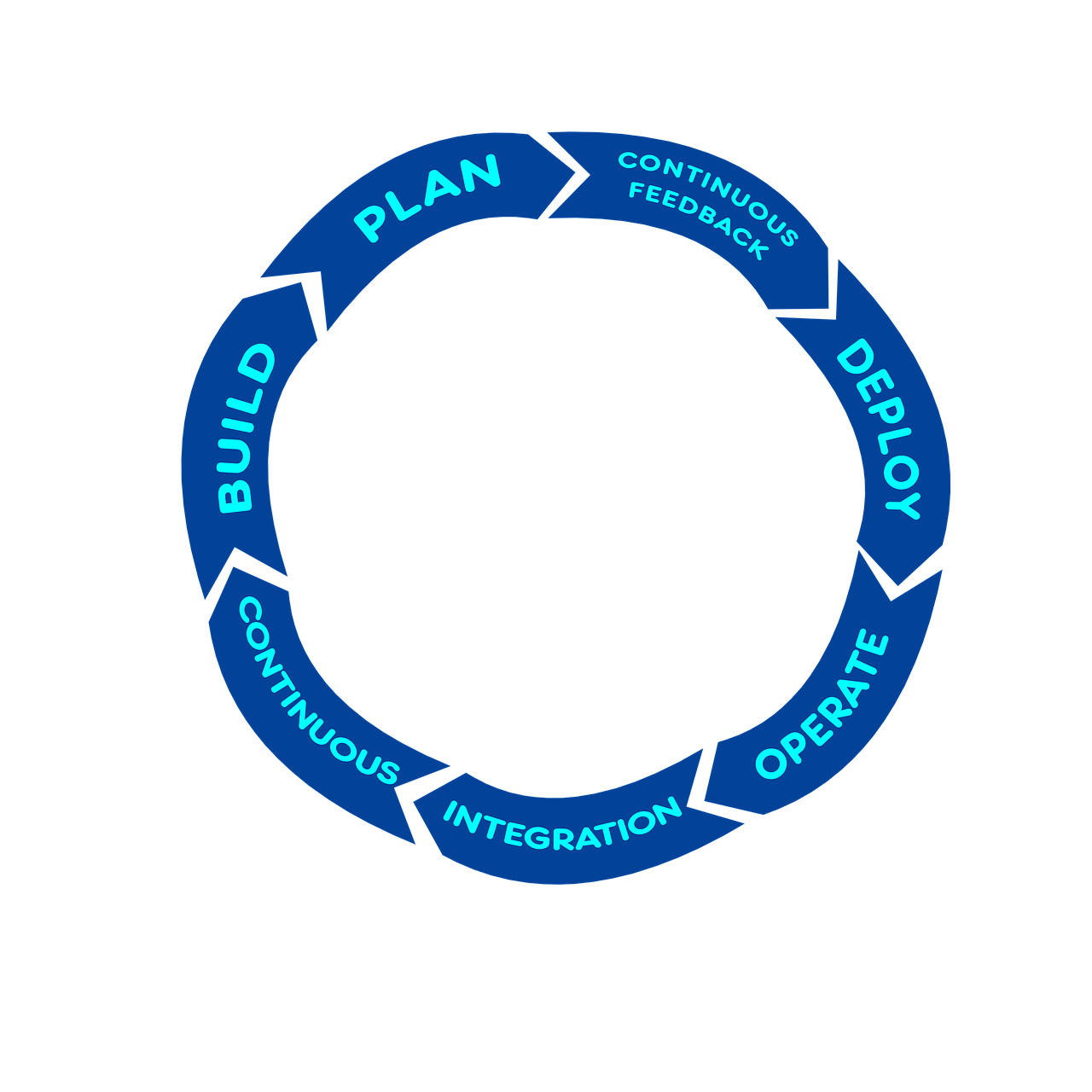This post will show you the best practices and recognized approaches of software development.
Despite the development of software for years, there is an art to it that not everyone can grasp. Developers are well rewarded for their efforts; there is a good reason for this: coding is complicated, and not everyone’s mind has that coding wiring.
Recognized approaches and best practices have been developed in the area of software. Let’s explore these in more depth.
Table of Contents
DevOps on Azure
Microsoft Azure has a dedicated DevOps server that manages projects and assigns tasks. It features version control, reporting, project management, automated builds, testing, and release management capabilities.
As such, DevOps on Azure is where most software development is managed and controlled.
READ ALSO: 5 Industries That DevOps Is Transforming
Agile
Agile is a software development methodology that came into being to try and combat the limitations of top-down structured design methodologies such as Waterfall. As such, when done right, Agile can speed up the development process and accommodate change when it is needed.
Agile puts a strong emphasis on customer inclusion. This is achieved through producing code that can be demonstrated and tested. Clients and other departments provide their input so that the changes needed are identified sooner rather than later.
Agile is quite forward-thinking as it emphasizes developers rather than tools and inflexible planning and forces out code rather than documentation. Development teams are encouraged to work in sprints to achieve deliverables faster, which allows for the inclusion mentioned earlier.
Agile is a highly flexible approach, and other methodologies have been built on top of it. Given the agility of Agile, is there room for structured top-down approaches? The answer is yes.
Waterfall
Although for some, Waterfall is outdated, it is still utilized where software teams have an in-depth understanding of project requirements.
The waterfall methodology was developed in the 1970s and has been the number one methodology for decades. It requires every development cycle to be planned to the nth degree with considerable input from both the client and the development team at the beginning of the project.
From this point, documentation is produced, and normally, the project is built in stages. Should a mistake need to be corrected or something added midway through, it means typically starting from the beginning.
The key strength of the waterfall is that progress can easily be tracked and measured as it develops in stages. Typically, one stage has to be created before the next one begins and so assigning tasks is easier for managers as everything is planned from the start.
READ ALSO: How to Choose the Best Software Development Company in the USA
Feature Driven Development (FDD)
Considered to be the precursor to Agile and Lean mythologies, FDD focuses on developing software frequently and is highly client focused.
The methodology gets its name as ‘Features’, which are client-valued work that should be produced every two weeks.
To achieve this goal, each feature is broken down into 5 steps. They are:
- Develop an overall model for the project.
- Build a feature list.
- Plan each feature.
- Design by feature.
- Build by feature.
Reporting is encouraged at the end of each step, which is an excellent way to spot errors and track progress.
Should a feature take longer than two weeks to fully develop, FDD forces the feature to be broken down into more steps to fit the two-week rule. This inflexibility can make FDD a little hard to use for some projects.
Best Practices and Recognized Approaches of Software Development: FAQs
The world of software development is brimming with various methodologies and approaches. Here are answers to some frequently asked questions to help you navigate this landscape:
Which approach is best for software development?
There’s no single “best” approach for software development. The optimal approach depends on several factors, including:
- Project size and complexity: Large-scale enterprise applications might benefit from a structured approach like Waterfall, while smaller projects might thrive with the flexibility of Agile.
- Project requirements: Clearly defined requirements might favour a Waterfall approach, while evolving requirements might be better suited for Agile methodologies.
- Team structure and culture: Agile methodologies often work well for collaborative and adaptable teams, while Waterfall might be a good fit for teams accustomed to a more structured environment.
Here’s a brief overview of some recognized approaches:
- Waterfall: A traditional, sequential approach where development progresses through well-defined stages (requirements gathering, design, development, testing, deployment). Offers a clear roadmap but can be inflexible for changing requirements.
- Agile: An iterative and incremental approach that delivers working software in short cycles (sprints). Adaptable to changing requirements but can lead to scope creep if not managed well.
- DevOps: A collaborative approach that emphasizes communication, integration, and automation between development, operations, and security teams. Aimed at faster deployments and improved software quality.
READ ALSO: 5 Cybersecurity Tips To Protect Your Digital Assets As A Business
What does best practice mean in software development?
Best software development practices encompass principles, methods, and tools that have proven effective in creating high-quality, maintainable software. These practices can include:
- Version control: Tracking changes made to code throughout the development process.
- Code reviews: Having other developers review code to identify errors and improve quality.
- Unit testing: Writing tests for individual units of code to ensure they function correctly.
- Continuous integration and continuous delivery (CI/CD): Automating the building, testing, and deployment of software.
- Documentation: Creating clear and concise documentation for the software, its code, and its functionality.
What are the 3 basic approaches applied to software development methodology frameworks?
While there are many specific methodologies, here are three fundamental approaches:
- Structured Development: This approach emphasizes a pre-defined series of stages, clear documentation, and a focus on planning and control. Waterfall is a classic example of structured development.
- Iterative and Incremental Development: This approach breaks down the development process into smaller, iterative cycles. Each iteration delivers a working piece of the software, allowing for feedback and adaptation. Agile methodologies like Scrum and Kanban fall under this category.
- Agile Development: A specific type of iterative and incremental development that emphasizes flexibility, collaboration, and rapid feedback cycles. Agile methodologies are known for their adaptability to changing requirements.
Which of the following are common software development approaches?
Several methodologies fall under the umbrella of software development approaches. Here are a few widely used examples:
- Waterfall: A structured, sequential methodology mentioned earlier.
- Agile: A broad term encompassing various iterative and incremental methodologies like Scrum, Kanban, and Extreme Programming (XP).
- Scrum: A popular Agile methodology known for using short sprints (typically 2-4 weeks) and scrum teams with specific roles.
- Kanban: An Agile methodology that utilizes a visual board to represent the development workflow. Tasks are visualized as cards that move across the board as they progress.
- DevOps: While not strictly a development methodology, DevOps emphasizes collaboration and automation between development, operations, and security teams.
READ ALSO: 12 Companies For Outsourcing Web Development [MUST READ]
What are the development approaches?
Development approaches encompass the overall philosophies and strategies used in software development. These approaches can guide the selection of specific methodologies and tools. Here are some examples:
- Top-Down Development: This approach breaks down the software into smaller, more manageable components, starting with the overall system design and then refining the details.
- Bottom-Up Development: This approach starts with developing individual components or modules and then integrates them into a larger system.
What are the two main approaches of software design?
There are many design approaches within software development, but two fundamental perspectives are:
- Object-Oriented Design (OOD): This approach organizes software around objects (data and the operations performed on that data) that encapsulate functionality and data.
- Functional Programming: This approach breaks down problems into smaller, independent functions that avoid data modification and side effects.
READ ALSO: 6 Ways To Optimize Your DevOps Team Productivity
A Final Word On The Approaches Of Software Development
Software development is complicated but with the right approach, it can be developed faster and leaner, especially if DevOps on Azure is in use.
INTERESTED POSTS
- 6 Most Common Web Security Vulnerabilities (And How To Tackle Them)
- 5 Best RememBear Alternatives
- Can Atomic Exchanges Achieve Critical Mass?
- 8 Best Cybersecurity Practices for Website Owners
- How To Create A Software Application Step By Step In 2022
- Should I Use A VPN For Gaming? [Here Is The Answer]
- 5 Cybersecurity Best Practices Everyone Should Know
- Data Security – How Safe Is Data In Our Technology Driven World?
About the Author:
Christian Schmitz is a professional journalist and editor at SecureBlitz.com. He has a keen eye for the ever-changing cybersecurity industry and is passionate about spreading awareness of the industry's latest trends. Before joining SecureBlitz, Christian worked as a journalist for a local community newspaper in Nuremberg. Through his years of experience, Christian has developed a sharp eye for detail, an acute understanding of the cybersecurity industry, and an unwavering commitment to delivering accurate and up-to-date information.
Meet Angela Daniel, an esteemed cybersecurity expert and the Associate Editor at SecureBlitz. With a profound understanding of the digital security landscape, Angela is dedicated to sharing her wealth of knowledge with readers. Her insightful articles delve into the intricacies of cybersecurity, offering a beacon of understanding in the ever-evolving realm of online safety.
Angela's expertise is grounded in a passion for staying at the forefront of emerging threats and protective measures. Her commitment to empowering individuals and organizations with the tools and insights to safeguard their digital presence is unwavering.








